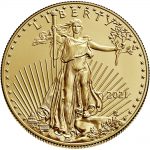 Sometimes, finding a link to a page that describes what things were like the year you were born can lead to educational and fun reading.
Sometimes, finding a link to a page that describes what things were like the year you were born can lead to educational and fun reading.
A friend sent a link to an October 2020 article on Stacker titled “Cost of gold the year you were born.” Aside from finding out that gold broke the $35 barrier the year I was born, the article outlines economic history from 1920 to 2020.
Some of the descriptions also will help explain some of the numismatic decisions that affect collectors. Understanding the economic history behind money can help understand where collectibles are today.
While reading through the list, I picked out ten significant highlights of the last 100 years:
- 1932: The last year the U.S. Mint struck gold coins that were circulated
- 1949: Switzerland stops minting the 20 Franc gold coin, the last gold coin struck for circulation
- 1955: San Francisco Mint stopped coining operations (it would return 13 years later)
- 1967: South Africa introduces the Krugerrand
- 1975: Gold ownership made legal again
- 1979: Canada introduces the gold Maple Leaf
- 1982: China introduces the gold Panda
- 1985: Reagan signs the Gold Bullion Coin Act
- 1998: The euro is introduced
- 2000: The Denver Mint produced 15.4 billion coins, the most of any mint
Understanding history is another way to get more out of your collection.
Read! Educate! And collect!


Scott
I recall that, when Gold ownership was legalized in 1975, the the price had gone to approximately $150 per ounce since Europeans thought Americans would buy plenty. Americans didn’t. The price went down to $103 per ounce. Some people lost plenty.
Sincerely
Bob